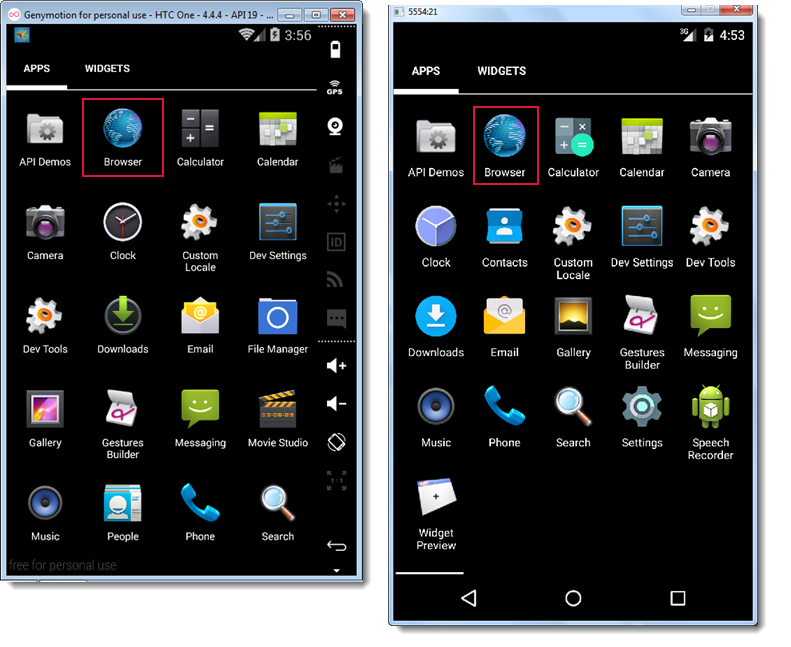Automation Guide  Application testing
Application testing  Mobile testing
Mobile testing  Testing mobile web applications
Testing mobile web applications  Testing the built-in browser on Android emulators
Testing the built-in browser on Android emulators 
The requested page is not available for selected version.
Invoking the built-in browser in Android emulator during automation
There are two methods by which the built-in browser may be invoked in Android emulators.
One, the “real-world” method, is to simply manually tap the built-in browser’s icon on your Android emulator. However, this method requires manual intervention during the automated test.

Alternatively, use the navigate built-in action.
Remember:
- For method #2, it is essential that you include the protocol (http:// or https://) for the target URL in the location argument. (For example, http://google.com)